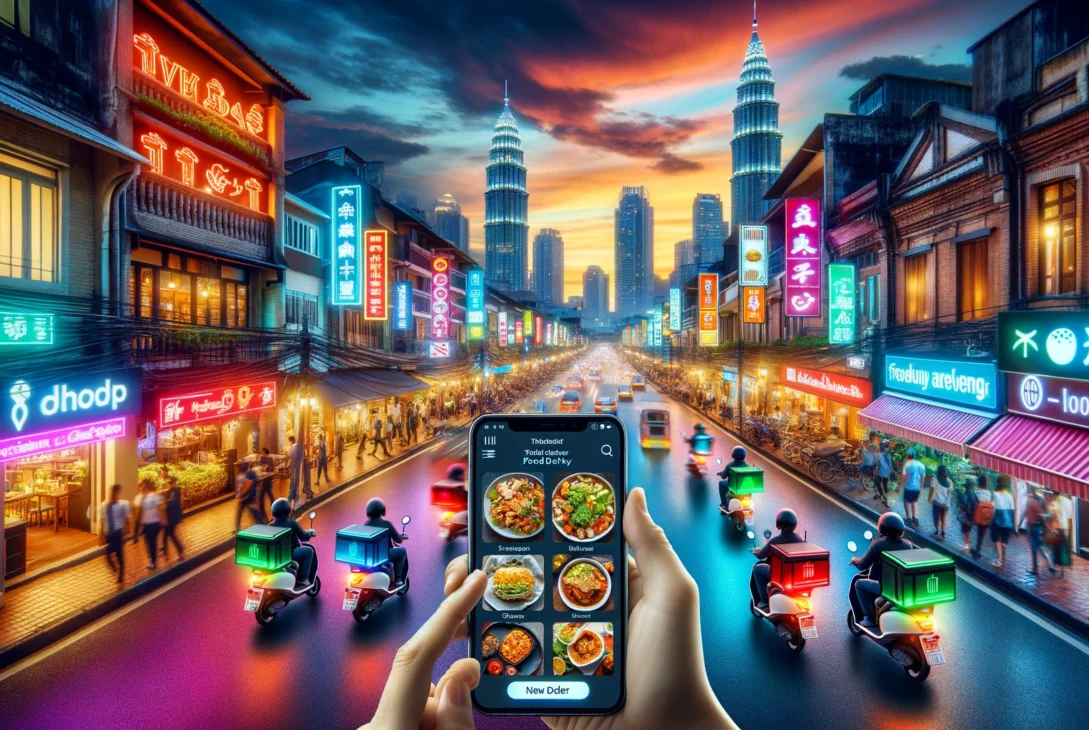Explore the transformative journey of food delivery apps and their profound impact on the food industry. From the democratization of delivery to the challenges of high commission fees, this article delves into how these platforms have reshaped dining experiences, offering insights into both the opportunities and hurdles faced by restaurants and consumers alike.
In recent years, the food industry has witnessed a transformative wave powered by the advent and proliferation of food delivery apps like Just Eat. These platforms have not only reshaped consumer behavior but also significantly impacted restaurants and food service providers. This article delves into the rise of food delivery apps and their multifaceted effects on the food industry. We will explore both the positive and negative aspects, steering clear of discussions on legal frameworks and ethics.
The Rise of Food Delivery Apps
The genesis of food delivery apps traces back to a confluence of technological advancements and evolving consumer preferences. The digital era brought with it an appetite for convenience, immediacy, and variety. Just Eat, among others, capitalized on this by offering a digital bridge between restaurants and consumers, thereby revolutionizing how people order food. Initially, these platforms provided a new revenue stream for restaurants and an easy way for consumers to access a wide range of dining options without leaving their homes.
The proliferation of smartphones and the internet has been a key driver behind the meteoric rise of these platforms. With just a few taps on a device, consumers can browse menus, read reviews, place orders, and make payments. The ease and convenience offered by these apps have led to their widespread adoption across demographics. Moreover, the competitive landscape of food delivery apps has spurred innovation, with platforms continuously enhancing their services through features like real-time tracking, personalized recommendations, and loyalty programs.
Positive Impacts on the Food Industry
One of the most significant benefits of food delivery apps is the democratization of food delivery. Previously, food delivery was a service largely reserved for pizza and Chinese food. Now, restaurants of all sizes and cuisines can reach customers directly through these platforms. This has opened up new revenue opportunities for restaurants, particularly small and medium-sized establishments that may not have the resources to develop their own delivery infrastructure.
Furthermore, these apps have provided invaluable data insights into consumer behavior, preferences, and trends. Restaurants can leverage this data to optimize their menus, pricing, and marketing strategies, ultimately enhancing the customer experience and improving their bottom line. The digital footprint left by online orders also allows for a more personalized approach to customer service, enabling restaurants to build stronger relationships with their clientele.
The visibility and reach afforded by these platforms cannot be overstated. For new or lesser-known restaurants, listing on a popular food delivery app can significantly increase brand awareness and attract new customers. This is particularly beneficial in highly competitive markets, where standing out can be a challenge.

Image taken from Sky News.
Negative Impacts on the Food Industry
However, the rise of food delivery apps is not without its challenges and downsides. One of the most contentious issues is the commission fees charged by these platforms, which can be as high as 30% of the order value. For many restaurants, especially those with thin profit margins, these fees can erode earnings. While these platforms do provide additional revenue streams, the cost associated can make it difficult for restaurants to sustain profitability solely through app-based orders.
Additionally, the reliance on third-party delivery services can lead to a dilution of the dining experience. The food that is designed to be served fresh and consumed immediately may not always translate well to delivery. This can lead to customer dissatisfaction due to issues with food quality, temperature, or presentation, over which restaurants have limited control once the food leaves their premises.
Another significant concern is the potential for market saturation and the homogenization of the food industry. As more restaurants join these platforms, the competition intensifies, leading some to engage in a race to the bottom with discounts and promotions. This can undermine the value proposition of dining out and put pressure on restaurants to cut costs, potentially compromising food quality and service.
Moreover, the convenience of food delivery apps may also contribute to changing dining habits, with consumers increasingly opting for delivery over dining in. This shift has implications for the traditional restaurant model, which is designed around the dine-in experience. Restaurants now face the challenge of balancing the dine-in experience with the growing demand for delivery, necessitating adjustments in operations, staffing, and even kitchen layout.
Strategic Adaptations in the Food Industry
The response from the food industry to the challenges posed by food delivery apps has been multifaceted. To mitigate the impact of high commission fees, some restaurants have started to renegotiate terms with delivery platforms or explore alternative delivery services that offer more favorable rates. Others have taken a more radical approach by developing their own ordering systems and delivery fleets, thereby retaining full control over the customer experience and avoiding third-party fees altogether.
In addition to logistical adjustments, restaurants are also reimagining their menu offerings to better suit the delivery format. This includes creating delivery-friendly menu items that maintain their quality and presentation during transport, as well as packaging innovations designed to keep food at the optimal temperature and prevent spillage. Such adaptations are crucial in preserving the integrity of the dining experience outside the restaurant’s premises.
Furthermore, the data provided by food delivery apps has become a goldmine for restaurants in understanding their customer base and refining their offerings. Advanced analytics allow for targeted marketing campaigns, menu customization based on popular items, and dynamic pricing strategies to enhance profitability during peak times.
Emerging Trends and Future Directions
The integration of food delivery apps into the daily lives of consumers has also spurred several emerging trends within the food industry. One such trend is the rise of ghost kitchens, also known as virtual kitchens, which are kitchen spaces that produce food solely for delivery, without a traditional restaurant setting. This model significantly reduces overhead costs and allows for greater flexibility in menu experimentation and scaling operations according to demand.
Sustainability concerns have also come to the forefront, with consumers increasingly aware of the environmental impact of packaging and food waste associated with delivery. In response, many food delivery apps and restaurants are implementing eco-friendly practices, such as using biodegradable packaging and optimizing delivery routes to reduce carbon emissions.
The concept of meal kits and grocery delivery has expanded under the umbrella of food delivery services, blurring the lines between restaurant dining and home cooking. This diversification not only broadens the customer base but also provides a buffer against the fluctuations in restaurant delivery demand.
Looking ahead, technology will continue to play a pivotal role in the evolution of food delivery services. Innovations such as drone delivery, AI-driven personalization, and blockchain for food traceability are on the horizon, promising to enhance efficiency, reduce costs, and elevate the customer experience.
Conclusion
The rise of food delivery apps has undeniably transformed the food industry, presenting both opportunities and challenges for restaurants and food service providers. As the industry continues to adapt and evolve, the focus remains on balancing the convenience and reach offered by these platforms with the need to maintain profitability, quality, and sustainability.
The journey of food delivery apps is a testament to the dynamic nature of the food industry, reflecting broader societal shifts towards digitalization and convenience. As we look to the future, it’s clear that the interplay between technology, consumer behavior, and food service will continue to drive innovation and redefine our dining experiences.
In conclusion, the rise of food delivery apps like Just Eat has catalyzed a significant shift in the food industry. By embracing adaptation and innovation, restaurants and food service providers can navigate the complexities of this new landscape, harnessing the potential of these platforms to thrive in the era of digital dining. The ongoing evolution of food delivery services underscores the importance of flexibility, creativity, and strategic foresight in an ever-changing industry.




